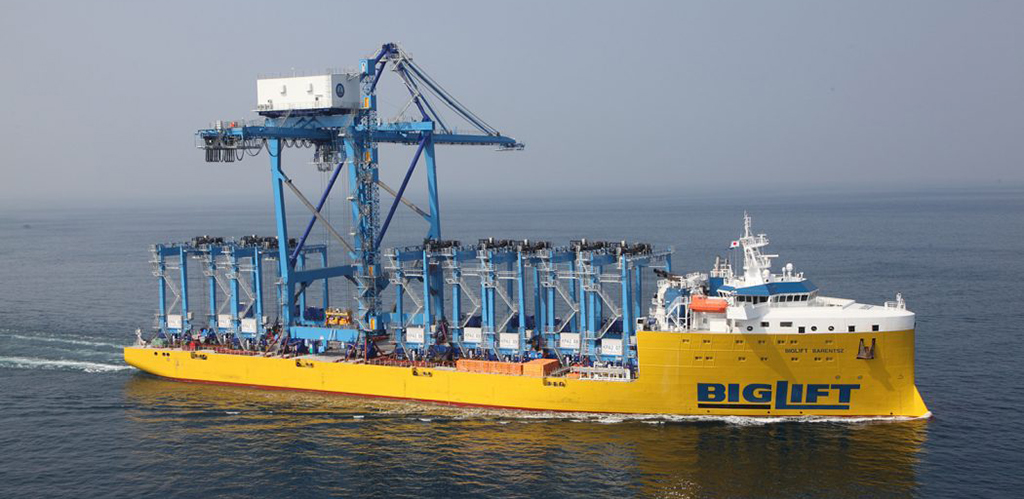Mar 07 | 2019
Breakbulk talks to Steve Saxon, Partner, McKinsey & Company, about how globalization is undergoing a radical change and how it will affect trade, and ultimately, how these emerging trends will reshape the way our industry does business.

Findings are from McKinsey Global Institute, the company’s business and economic research arm.
What does your research find? Is globalization in retreat?
Our research findings suggest that globalization is entering a new chapter, with different sets of countries and workers poised to benefit. Let me give you three examples. First, trade is still growing overall, but a smaller share of the goods made worldwide is being traded across borders. Countries are consuming more of what they make at home. Second, we’re moving past the days of chasing low wages around the globe. Today only 18% of trade involves advanced economies importing from the lowest-wage countries. Third, trade in services is growing 60% faster than trade in goods. Cross-border services and data flows are the new connective tissue of the global economy. So globalization is continuing but in a very different form.
What are the evidences of countries consuming more of what they make at home? Why is this happening?
Although output and trade both continue to grow in absolute terms, a smaller share of the goods rolling off the world’s assembly lines is now traded across borders. Between 2007 and 2017, exports declined from 28.1 to 22.5 percent of gross output in goods-producing value chains. The major factor behind this drop is what MGI calls the “new China effect.” China and other fast-growing emerging markets are now consuming more of what they make at home and developing more comprehensive domestic supply chains – a healthy sign they are reaching a new level of economic development.
If labor cost arbitrage is a small portion of the trade, what drives the rest?
The search for the lowest-wage labor is no longer a primary driver of global trade. Less than 20 percent of goods trade today involves exports from low-wage countries to high-wage countries. In fact, all industry value chains now involve more high-skilled labor, while investment in intangible assets (such as R&D, brands, and IP) has more than doubled as a share of revenue, from 5.5 to 13.1 percent, since 2000.
How important is service trade? Official statistics suggest that it is much smaller than goods trade.
While trade negotiations today focus on agricultural and manufactured goods, services trade and cross-border data flows are soaring. One of the key findings of our research (as mentioned earlier) is that cross-border services are growing more than 60 percent faster than trade in goods.
Some types of service trade, including telecom and IT services, business services, and intellectual property charges, are growing two to three times faster than goods trade. Part of MGI’s new research involves sizing some of the cross-border service flows that go unmeasured in traditional statistics. The three uncounted aspects are the value-added services contribute to exported goods, the intangibles companies send to foreign affiliates, and free digital services made available to global users. National statistics attribute 23 percent of all trade to services, but including these three channels would increase their share to more than half.
What will be the impact of technology on trade?
Over the past 30 years, digital technologies brought down communications and logistics costs and fuelled a boom in global trade. MGI’s research finds that the next generation of technologies will have more complex effects. Some technologies, such as automation and AI, radically change the importance of capital versus labor and are causing companies to rethink their geographic footprints. In some scenarios, new technologies could continue to reduce trade intensity in goods while spurring more services trade. For example, the rising sales of electric vehicles could reduce trade in vehicle parts (since EVs have many fewer moving parts than traditional models) while also dampening oil import.
What’s changing for companies?
Today there’s new demand for all kinds of products and services across the developing world, and new technologies are changing production and logistics. Speed to market is becoming more important, and a lot more value is being generated from services. All of this is causing many companies to take stock of whether they need
to change their strategies and their geographic footprints. The last wave of globalization was about companies expanding international operations and building long supply chains around the world. Now we see some of them localizing production near key markets around the world so they can be faster, more coordinated, and more in tune with those customers.
What’s the implication for shipping?
The good news is that demand will continue to grow. More ships will be needed, both for the additional cargo and for replacement. The demand though is likely to grow faster regionally than long haul. And that has two implications.
The first is that the tonne-miles will grow slower than the tonnage itself. And, because ton-miles is the key determinant of shipping, shipping growth will be slower than trade growth.
Second, on short trades, fuel is a lesser share of the total cost. So, there is less imperative for larger ships. A fleet of mid-size and highly flexible vessels will be important for supply chains in some regions, especially Asia.
Finally, given the increasing value of knowledge, reliable services, with full transparency on cargo situation to cargo owners becomes ever more important. Shipping lines and forwarders need to continue to drive their digital transformations.
About the McKinsey Global Institute
Since its founding in 1990, the McKinsey Global Institute (MGI) has sought to develop a deeper understanding of the evolving global economy. As the business and economics research arm of McKinsey & Company, MGI aims to provide leaders in the commercial, public, and social sectors with the facts and insights on which to base management and policy decisions. MGI research combines the disciplines of economics and management, employing the analytical tools of economics with the insights of business leaders.
Our “micro-to-macro” methodology examines microeconomic industry trends to better understand the broad macroeconomic forces affecting business strategy and public policy. MGI’s in-depth reports have covered more than 20 countries and 30 industries. Current research focuses on six themes: productivity and growth, natural resources, labor markets, the evolution of global financial markets, the economic impact of technology and innovation, and urbanization. Recent reports have assessed the digital economy, the impact of AI and automation on employment, income inequality, the productivity puzzle, the economic benefits of tackling gender inequality, a new era of global competition, Chinese innovation, and digital and financial globalization. The partners of McKinsey fund MGI’s research; it is not commissioned by any business, government, or other institution. For further information about MGI and to download reports, please visit mckinsey.com/mgi.


